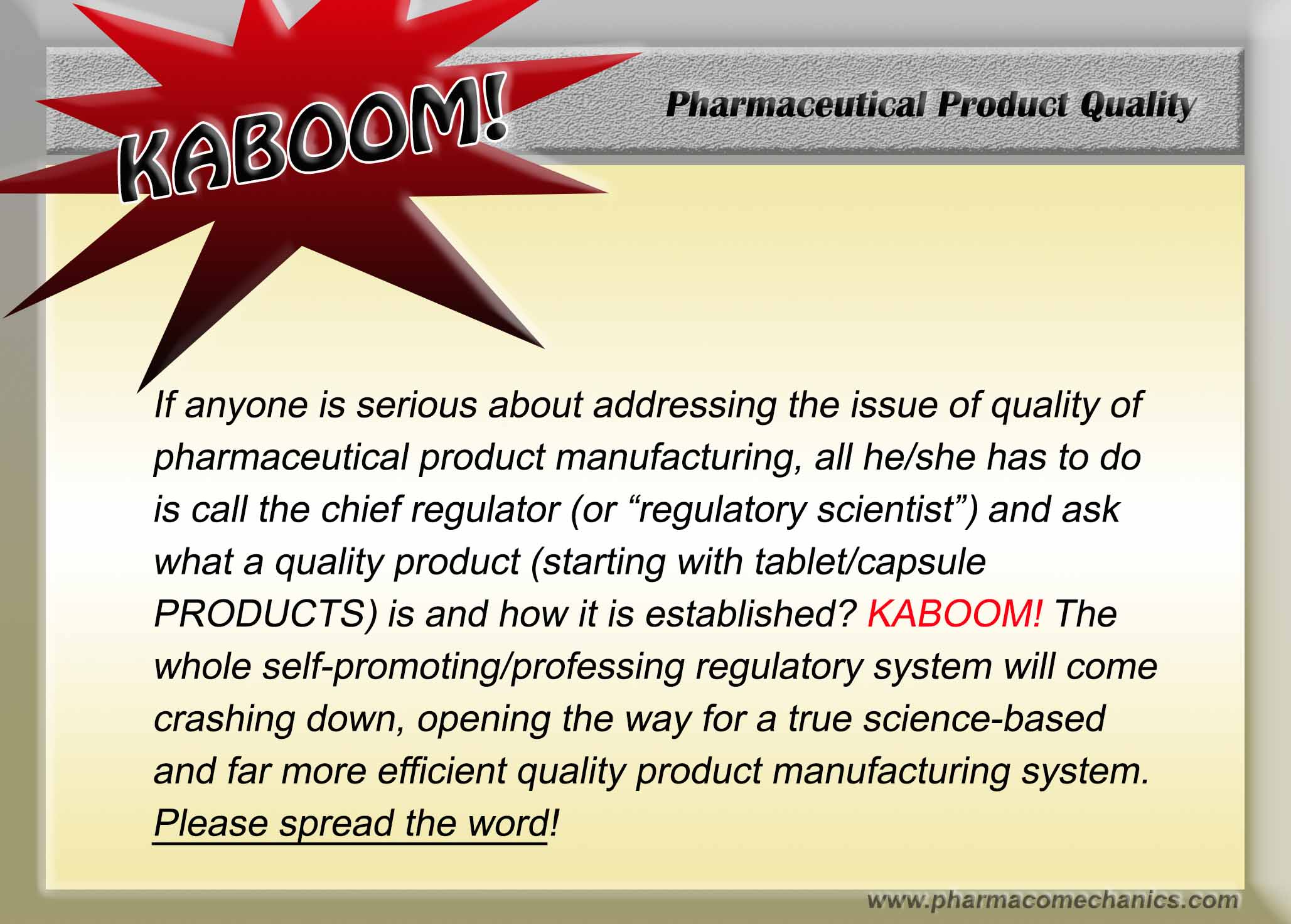Monthly Archives: March 2017
QbD – Now or later: A debate on the scientific aspects of QbD application
As a follow up to a discussion on LinkedIn Form (link) and my previous posting on this site (link), posted here is an agreed upon version (document) of our debate and views (link). I hope visitors of this blog will find this discussion useful for their own purpose and scientific advancement in general.
Please, feel free to share your comments or views by sending these to me at (moderator@drug-dissolution-testing.com) or on LinkedIn Forum of your choice.
Regards
Saeed Qureshi, Ph.D.
moderator@drug-dissolution-testing.com
My recent presenatation at the Faculty of Pharmacy, University of Montreal
A copy of the presentation (slides) is attached (link). If you have any comments and/or questions, please do not hesitate to contact/write me at moderator@drug-dissolution-testing.com
Need for quality definition for QbD applications
A follow-up post from LinkedIn Discussion Forum for the visitors of this blog.
With reference to your comment “Our consensus starting point is that a scientific definition of a quality attribute (we will focus here on rate and extent of drug dissolution) is necessary for QbD. “
For simplicity and clarity sake, I would consider “quality attribute” in two parts: (1) quality – establishing patient’s need which is fulfilled by the product (2) attribute – a measureable characteristic which would reflect quality aspect. For the purpose of our discussion, quality means – a product must deliver the drug as expected (which consumer needs). Note a subtle difference here, but critical one, that consumer does not need a product but drug, however, buys a product to fulfill its need of the drug. So, the quality of a drug product becomes its ability to provide drug to patient in an expected manner. As a scientist we need to acknowledge and fulfill this need of the patient. To answer this question in a scientific manner, we need to define a measureable characteristic of the product showing deliverability of the drug – this measurable characteristic becomes quality attribute of the product. In general terms this quality attribute is known as drug release/delivery capability of the product. So, in reality drug release/delivery capability is the quality attribute. Measurement of quality attribute will depend on the type of a product, most likely would depend on the route of administration of the product. For our current discussion, we will start, or restrict initially, our discussion to oral products such as tablet and capsule. For oral products drug release capability (quality attribute) is measured by drug dissolution characteristics of the product in the GI tract. As the drug dissolution is a critical characteristic for assessing drug release/deliverability of oral product, hence it becomes CQA. Please note here, drug dissolution test/testing is not a quality attribute but a test to measure quality attribute (drug release capability) of the oral products. So, if one likes to move towards QbD, one needs to agree on the terminology of quality and its attribute followed by its measuring approach. Let me know of your views on this aspect and then we will move further.
Drug dissolution testing – a useful and practical suggestion!
Please do not spend too much time thinking or discussing dissolution results, as currently suggested testers and experimental conditions have no scientific basis. In addition, by its nature dissolution testing using currently suggested apparatuses, in particular paddle/basket, provide only highly variable, unpredictable and irrelevant results.
In case you do not get expected or desired results, please keep testing until you get the desirable results, which in essence is the pharmacopeial approach of continued testing (S1 to S3) with 6 units, followed by 6 more units, and then by 12 units. You will be in a tough situation if you do not meet the test at S3. After that you might have to make up some clever suggestion/reason to get over this situation, so that you could continue this repetitive testing.
In the end, if you have a choice simply document that the suggested testers are non-GMP (non-validated/non-qualified), thus their use was not further explored. No one can challenge this! Use a more scientifically relevant tester e.g. see here.



